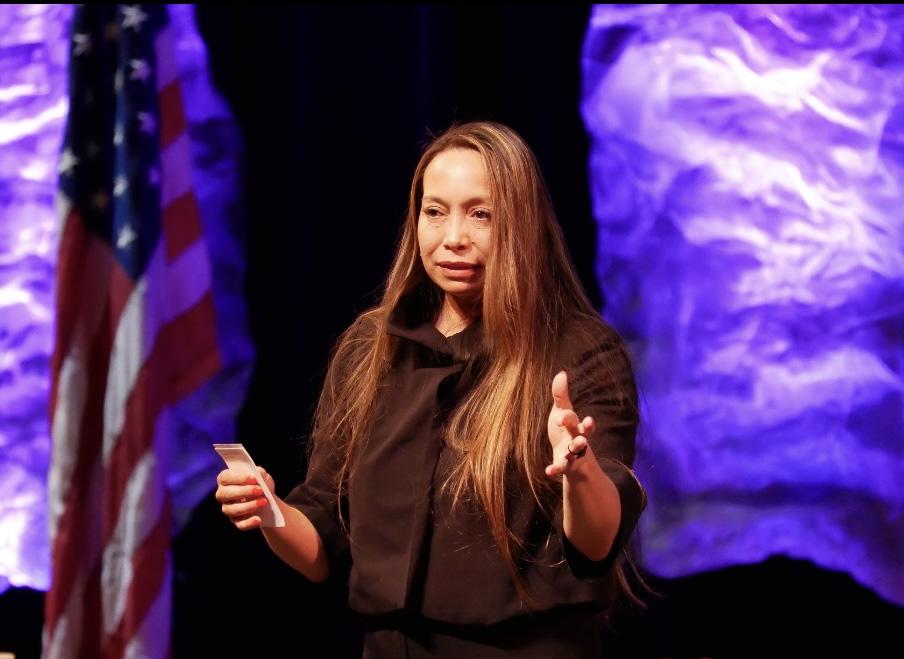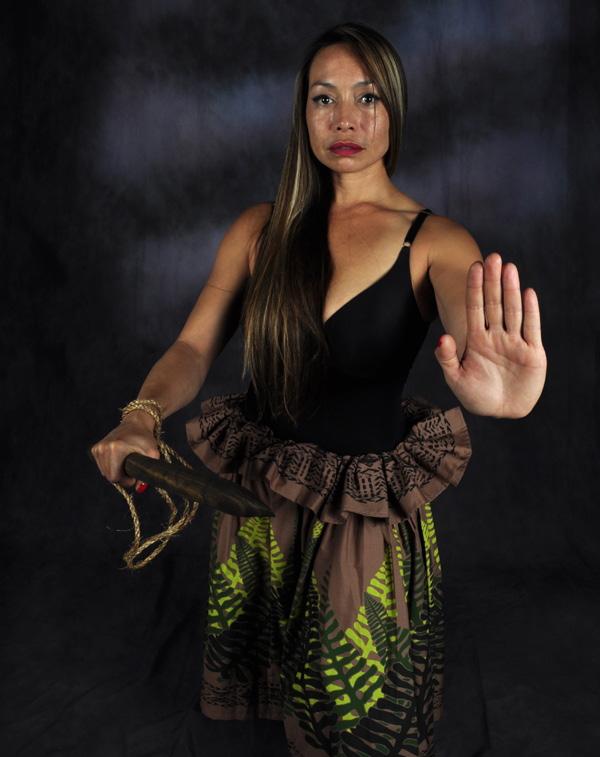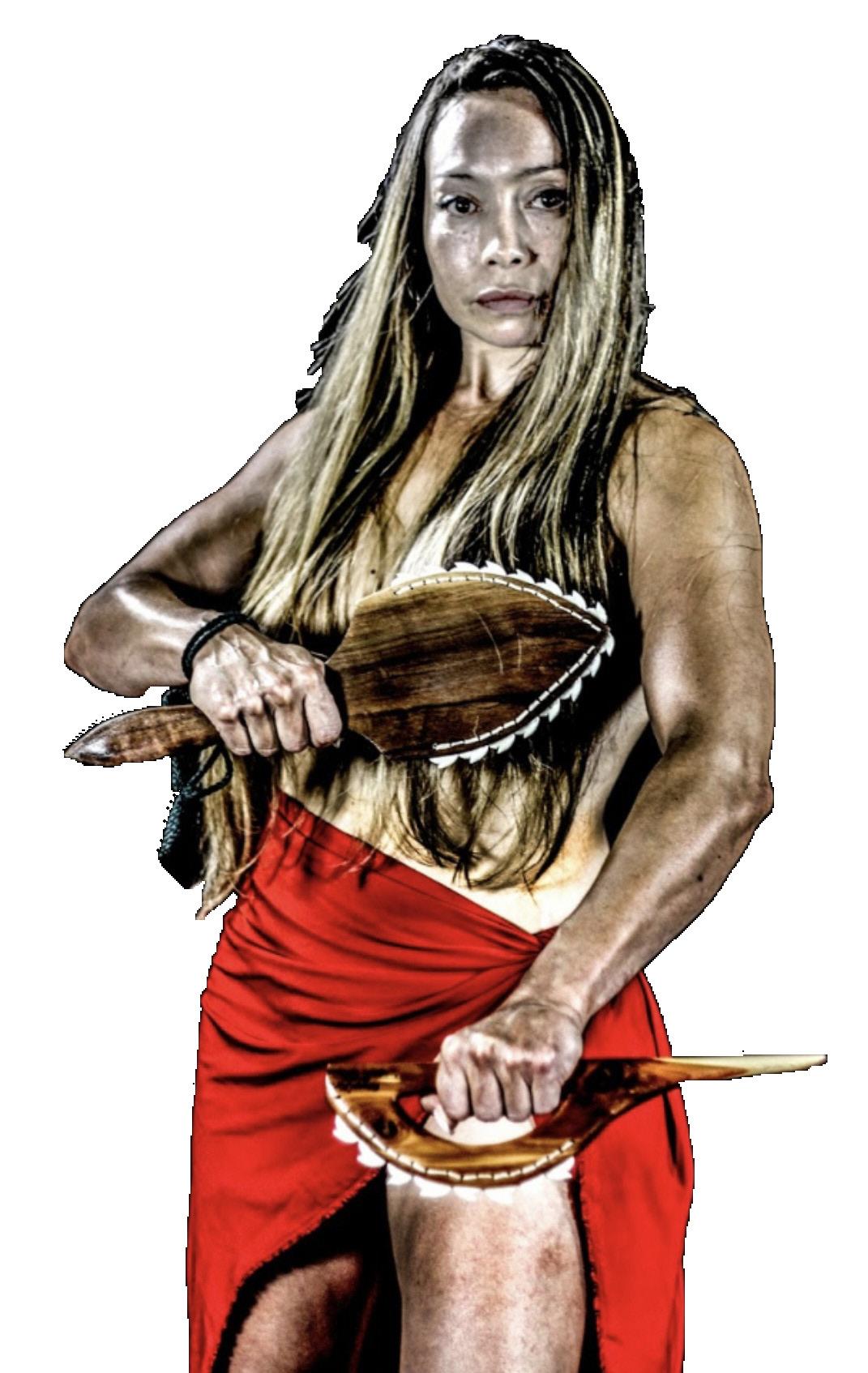
13 minute read
MY STORY KUMUL Michelle Manu
MY STORY
KUMU Michelle Manu
Advertisement
by SMaster Guy E. Larke
Lua – Discovering an Ancient Treasure
Part 1
20 Questions for Kumu Michelle Manu
There is a myriad of tales of those who were immersed at a young age in their culture’s ancient traditions and stayed true to them all along. There are far less about those who start in exotic traditions and slowly make their way back to what their ancestors did.
For myself it took years of study in Korean traditional arts to make me appreciate disciplines such as Renaissance European martial arts, Savate and Bartitsu. By seriously investigating another nation’s arts we not only learn that culture, but start to compare their culture to our own out of curiosity and perhaps see it in a new light. Perhaps that isn’t the Hollywood or Hong Kong ordained origin of a martial artist, but I feel it’s far more believable and sincere. The master of this article went through a similar experience. She has become a symbol for not just female martial artists but women as a whole!
1. What is your date of birth and where you were from?
A: I was born in the month of March in Chicago, Illinois.
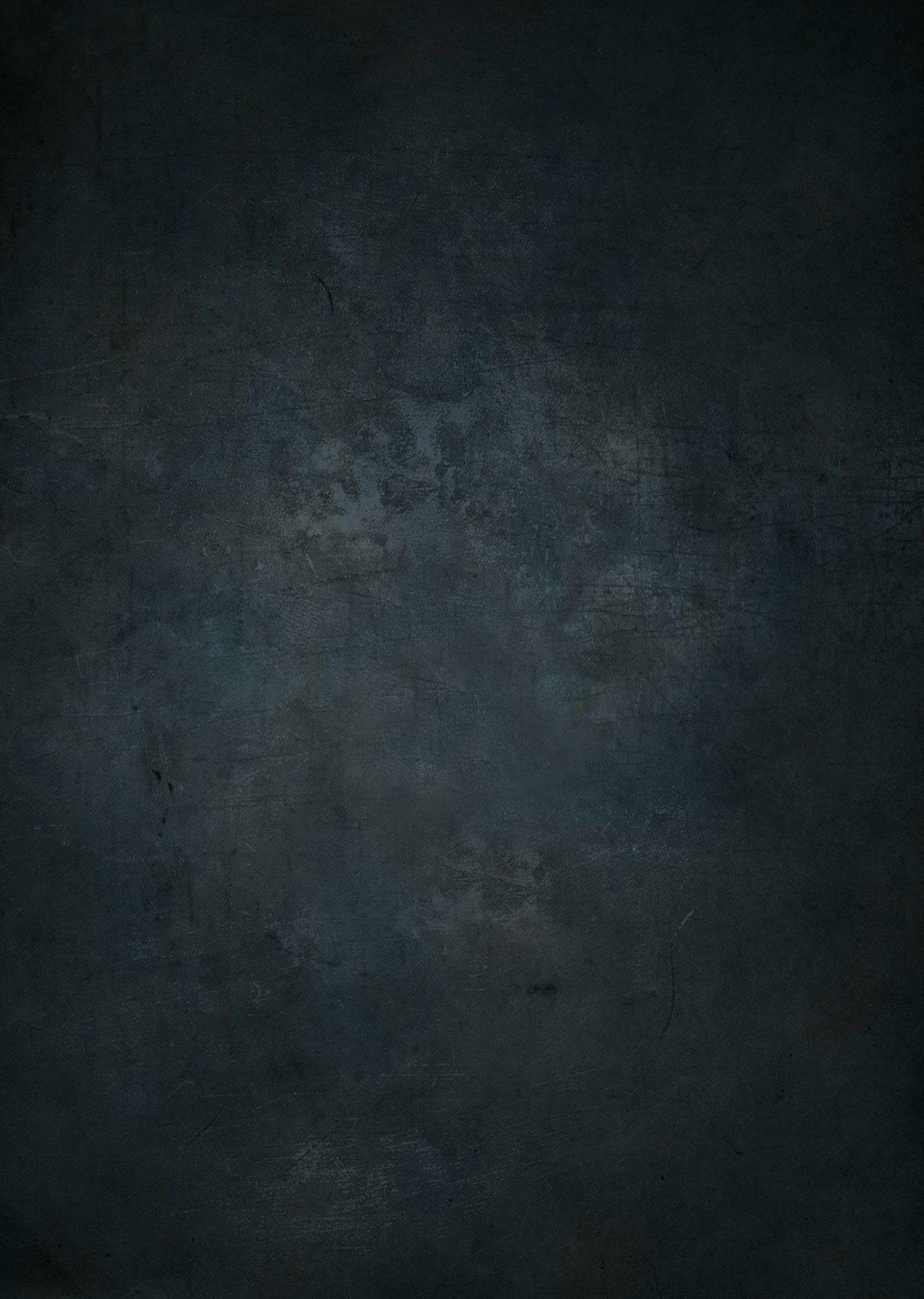
A: My father was of Hawaiian, Filipino, Chinese, and English descent. My mother was of Norwegian, Danish, and Scottish decent. I grew up in Southern California but also lived in Chicago for 7 years.
3. Are there any martial artists in your family?
A: My father was a martial artist. All of siblings have trained in some form of martial arts, three of us earning our Black Belts. I am the only one that has continued to seriously train and teach.
4. When you were young what was the image of martial arts at that time.
A: Main stream films during the 1980's helped the overall image of martial arts at the time I started training. We didn't have a television so I was forced (literally) to try martial arts when my mother dropped me and my sister off at a dojo. I was resistant but that quickly changed.
5. What got you started in the arts? What style? With who?
A: My mother took me and my younger sister, because they had a 2-for-1 special. We started at the oldest American Kenpo school in Orange County, California.
6. What was your first impression of it?
A: Well, I was a ballet dropout at 4 years old. I did tap, jazz, and acrobats but always knew it wasn't what really moved me. I've always loved the hula, but didn't understand its significance.
My sister and I were the only girls in the class when we arrived for training. I was uncomfortable. My ki felt weird. I felt like I needed to be protective of my sister. They did this weird salute thing. I was 9 years old! I thought, "This is for boys". It took 10 minutes of the first class where I had the profound revelation, "This isn't for boys! This is for me!" I had no idea what that pivotal moment meant at such a young age. Now I laugh and say at 9 years old that I knew I wanted to earn my Black Belt, wanted a lipstick candy apple red slant nosed Porsche 911 (which I had a poster of), and to be the President of the United States.
7. When was your first black belt/ sash/significant level?
A: I left Kenpo after a couple years. I took some Asian arts in Southern California and also in Chicago while I toured as a professional Polynesian performer. I found Olohe Solomon Kaihewalu in the late 1990's. By choice, he hadn't had a female student since the early 1980’s. It was very difficult to even talk with him on the phone. I was invited to watch a class, was accepted as a haumana (student), and it was at that point my life started to fulfill part of its purpose. He fed me as much as I could absorb. I was not given any exceptions. My fellow brothers were tasks with trying to make me quit, go away. I was awarded my First-Degree Black Belt in 2001 in Kona, Hawai’i.
8. What was that experience like?
A: I couldn't believe it. I trained and waited since I was 9 years old for that very moment, I earned my Black Belt. It was life-changing for me. I couldn't speak and could barely keep my feet under me. What I've been taught comes with great responsibility which I accept wholeheartedly, then and today, regardless of rank.
9. Did it change you as a young person? How so?
A: Even though I was already involved with body awareness movements - dance, surfing, skateboarding, running and competition cheerleading, martial

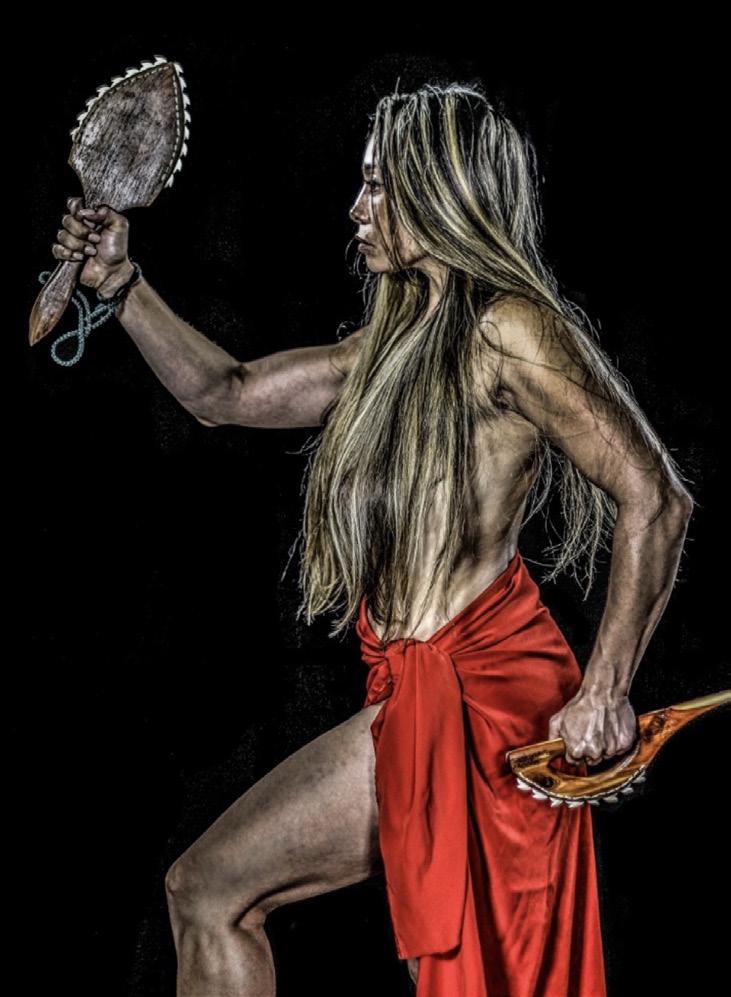
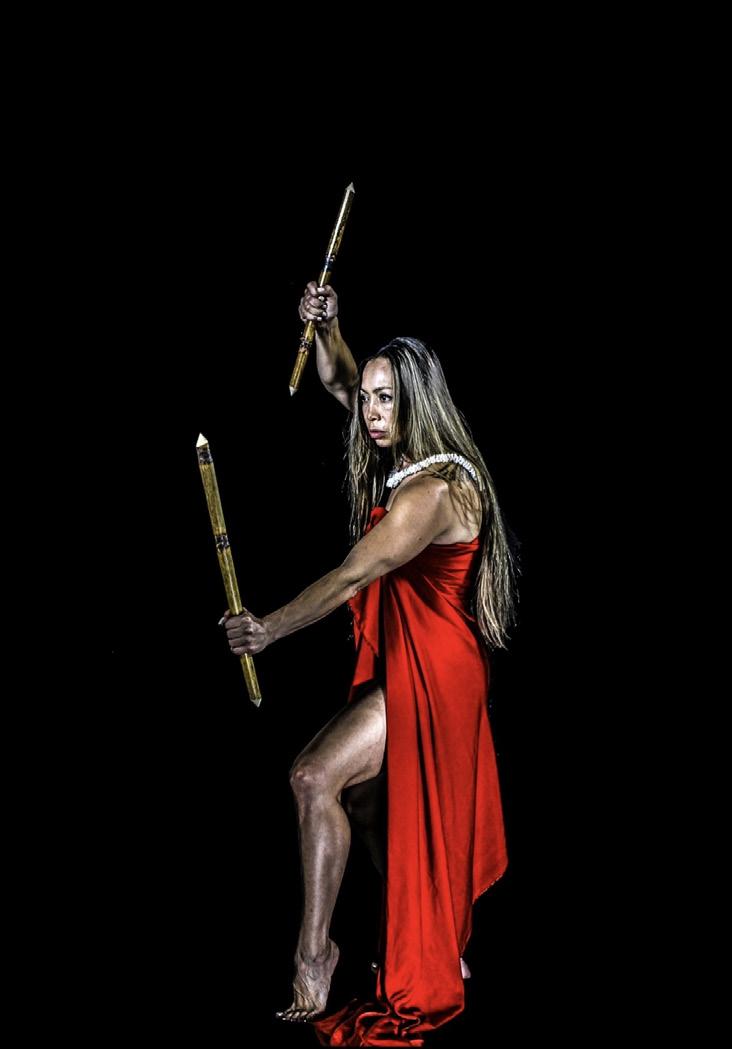
arts was the disciplined full-contact activity that helped me to build confidence in and outside of the pa lua (dojo). It changed everything and continues to change everything, every day. It is in every breath I take and in everything I am and do.
10. How difficult is it to study Lua and similar arts? Are there books, DVDs, etc.?
A: To study the Kaihewalu Lua, it can be difficult is a limited group of teachers (Kumu) in the world that are authorized to teach by Olohe, Solomon Kaihewalu. Those aligned with the Kaihewalu family can be found here: (https://kaihewalulua. com/kumu-lua-1). Once a potential student locates an authorized Lua teacher, that teacher may not accept the individual as a student. If accepted, the Kaihewalu Lua is physically challenging to one's natural ways of movement. Lua is all the time, not just in the dojo. Lua eventually becomes first nature after many years of hard work, focus, and dedication.
Olohe Kaihewalu had students across the world by DVD and participate in his seminars when he travels. Olohe Kaihewalu authored a manualstyled book in 2006 entitled, Ancient Hawaiian Art of Lua of Kaihewalu 'Ohana Lua. After his passing in 2019, I started my own system called Nā Koa (The Warriors). I teach internally and weekly, physically in the dojo and also virtually through Zoom. I also have an online classroom where all can self-study at their convenience.
11. When a martial artist immerses him or herself into it, what should they keep in mind? the worthy path of the Kaihewalu Lua needs to be ever thoughtful of the life-changing lessons. The word Lua means pit, two, or duality. While the goal is to dislocate an opponent and place him or her straight into the pit (there is no walking your opponent out/down in the Kaihewalu Lua), the duality of self - light/dark, masculine/feminine, good/bad - is the other lesson. So, studying and mastering the Kaihewalu Lua is not just in one's movements, but about spiritual mastery over self in all areas of his or her life.
12. What is your feeling on Western martial arts culture? What is good about it and what do you feel is lacking?

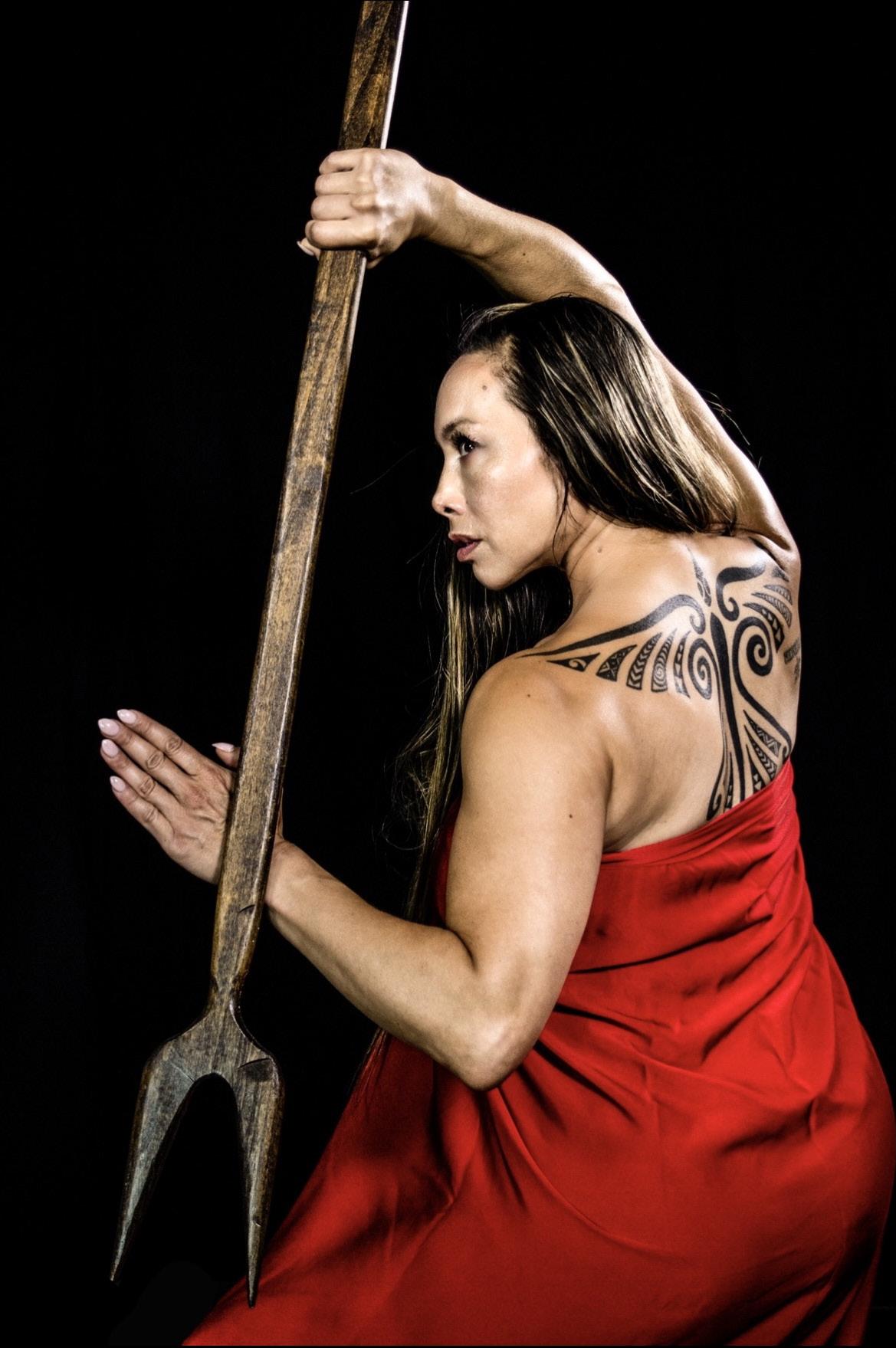
of traditional or cultural martial, sport or competitive martial arts, professional sport martial arts, and self-defense. It seems like there are a lot of martial arts business dedicated to moving people to the level of Black Belt quickly without having to put in the necessary physical or maturity development to reach such a momentous life achievement. I feel that the arts should also help individuals use martial arts as a path of self-evolution.
13. Do you feel women are finally starting to be taken seriously in the arts?
A: Absolutely, yes. Social media has helped me to see and support other women masters of their respective arts. While martial arts is still heavily dominated by men, which can and does have its challenges, men are amazing supporters as more and more women train in martial arts. For me, I am taken very seriously. While my appearance may cause some to dismiss me as a “martial model”, many know that that would be a mistake. My proficiency speaks for itself.
14. Could you name a few of the martial artists who inspire you and why?
A: All of the martial artists that train hard and teach. Those that pour themselves into others while still caring for themselves. Those that don't need to say a word because their actions undeniably evidence who they are and what they choose to become moment-to-moment. These are our role models as martial arts evolve.
15. Any words of wisdom or inspiration for readers? A: Whether it is martial arts, yoga, surfing or knitting, find what stirs your spirit! Find what calls to you and make it a regular part of your path of self-mastery, as a commitment to yourself. Commit to learn the lessons you came here to learn by and through the activity you so choose.
16. What would you say is your legacy?
A: My legacy, without a doubt, is to appeal to the internal feminine predator in each and every woman. To have the women that cross my path, whether through martial arts or otherwise, to learn to silence and kill off the critical self-talk, to stop the double standards on self-care, and to assist them in finding their power (physically and spiritually) by making proactive, creative, and beneficial decisions to clear their paths and commit to themselves while they still healthfully care for others. “Stand in your power. Own your space.”
17. I heard you were knighted in Hawaii. Could you share some details about that?
The Royal Order of Kamehameha I is an order of knighthood established by King Kamehameha V in 1865 to promote and defend the sovereignty of the Kingdom of Hawai’i. Some recipients of knighthood have been granted to the Queen of the United Kingdom, Emperor of Japan, and the King of Italy. Being given the title of “Knight Commander” by the Royal Order of Kamehameha I (the First) was and is profound. It has elevated by kuleana (responsibility) from being a disciple of the Lua, specifically of the Kaihewalu family lineage, to all the Kingdom of Hawai’i.
When I was first contacted, I thought it was a joke as women are not allowed to be members of the Royal Order, not to mention being given the designation as a knight. I then learned that the differences in titles,

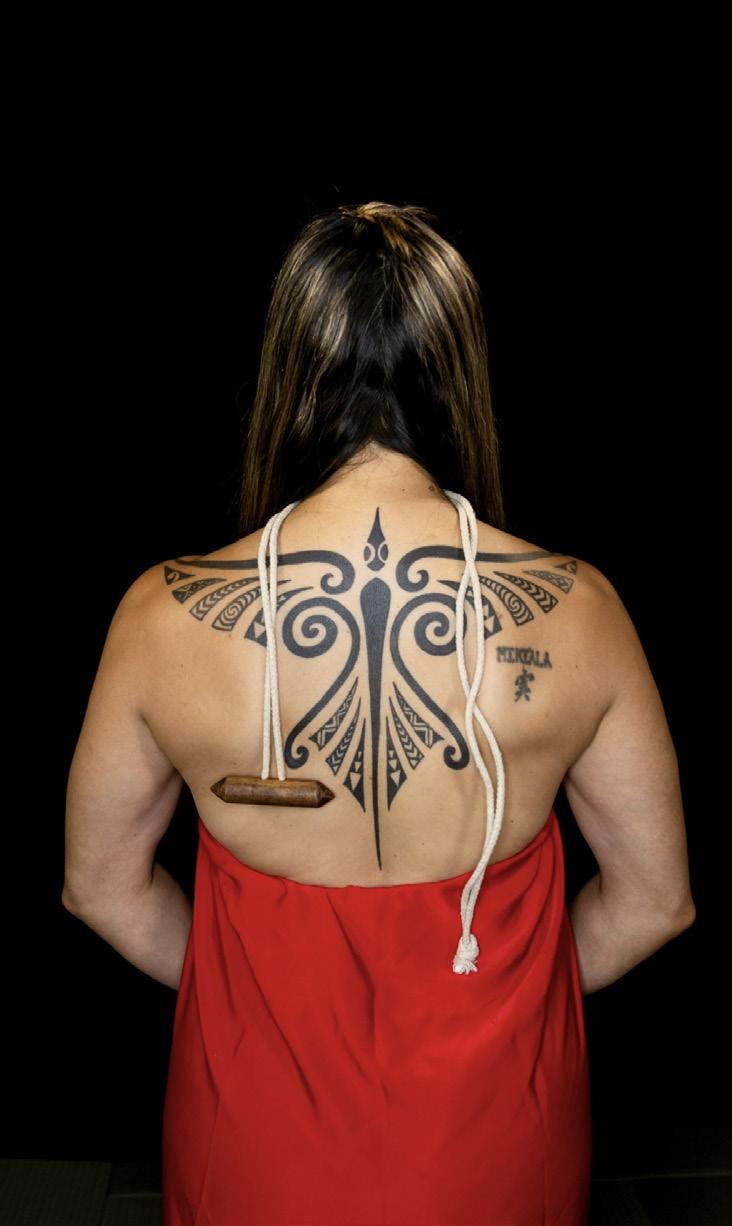
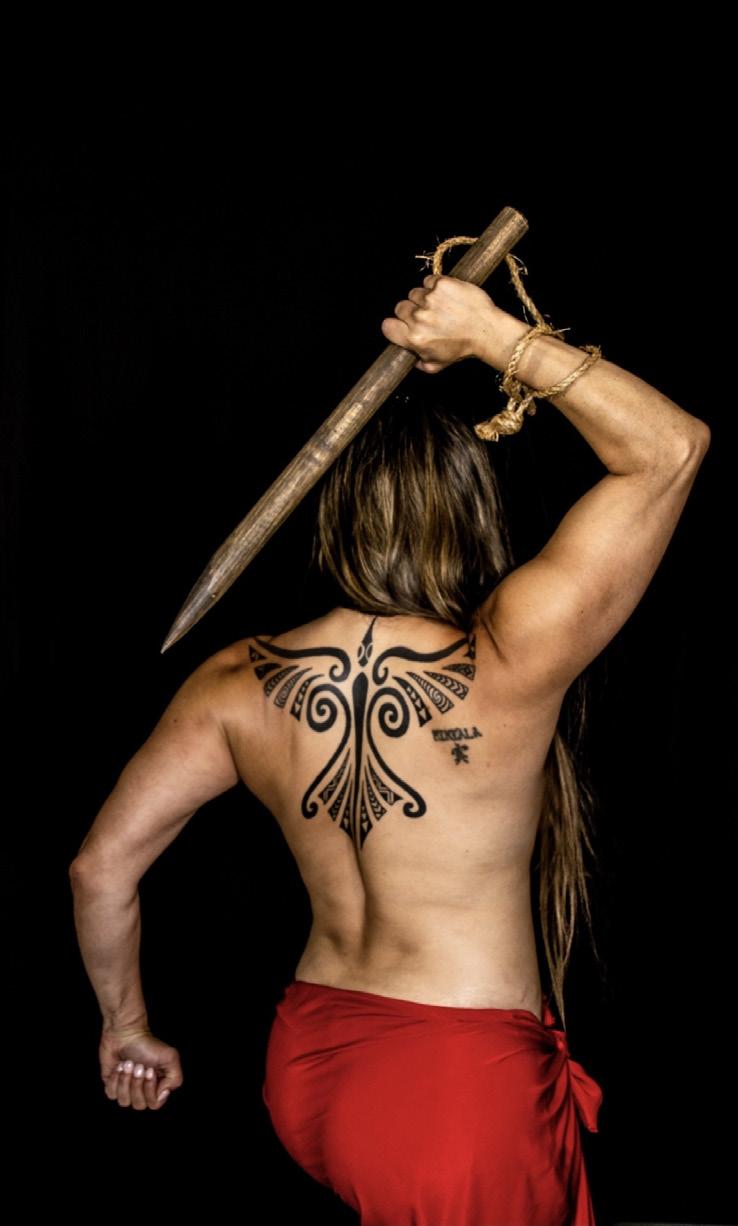
such as “Lady” is a title for a wife of a knight and “Dame” is the title for a female knight. This designation is extremely significant for me and the work that I do in the world in (in this order) protecting, promoting, and perpetuating the Hawaiian culture, by and through the Lua, the only native or indigenous cultural warrior practice.
18. I understand you recently finished a few film projects. What can you tell us about them?
Being a proficient and very welltrained martial artist, I guess it would only make sense that some in media - such as producers and directors - would eventually reach out for a proficient woman martial artist to show these movements on camera. While the industry is ripe with stereotypes and misrepresentations of women martial artists and women of color, I see this as part of my responsibility to show the power of women and women martial artists in media. This does not come without great challenges sometimes, on- and off-set. Sexism, ageism, and challenges to skin color prove to still be challenges in media for women.
For me, I will not take any roles or choreograph any fight scenes that are not specifically Hawaiian Lua. I will also refuse any roles that perpetuate the useless and diminishing stereotyping and the portrayal of women in a very sexual manner. Another challenge that I experience is (most times) not being able to make contact while filming. I assume this is a common challenge of all martial artists who also work in media. We are not actors showing martial movements, we are proficient martial artists, tried and true, showing and honoring our respective arts in media. There are several projects still in pre-production and production. Releasing this year are several cherished projects: IN3DRAGON film by Lao Hollywood, The Ultimate Throwdown film by American Muscle Entertainment, Immortal Hands series by Immortal Films II, Kung Fu Femmes film and Bad Kill short by Kung Fu Femmes.

19. You have done a lot of work in the field of self-defense for women. How does your approach differ from others?
I have always been, and will always be, an advocate and teacher for women and minimized groups to learn how to protect themselves. I started teaching the SHE Program (Super Hero Experience) in 2014 to everyday women, women experiencing homelessness and real time domestic violence, and young girls.
It has grown into personal safety training for women, professionals, and student in high-risk professions and universities. This has included real estate and healthcare professionals. Most recently, I have created a new program entitled “Urban Survival for Women”.
My approach is very different than others. While physics, body placement, one’s physical structure, and consistent conditioning and training matter - ultimately, women must believe that they can survive and vow to not give up even if the feels and smell their own blood. The determining factor for survival is one’s predetermined mindset and relentless belief in oneself. You will get hurt. Accept this and fight back.
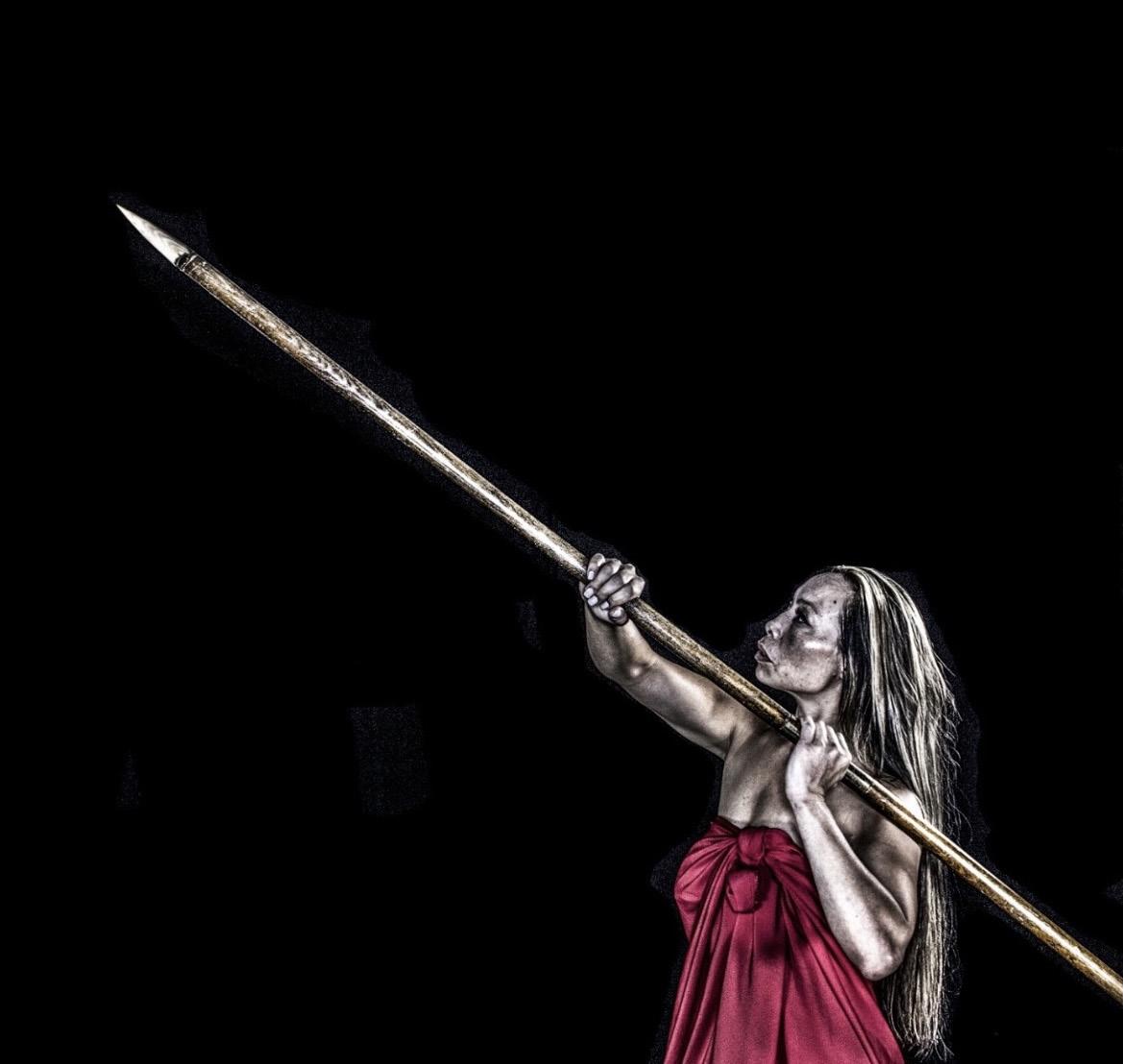
“If you think you can survive a violent event without violence, you are already dead.”
- Michelle Manu
20. What does the future hold for you?
The future is limitless. I will go and impact where I am led. I will continue to powerfully represent women in media, to the world, and as a keynote speaker and educator. I will continue to teach across the globe to assist in the awakening of others into their inherent power. This is my purpose and I will not stop until I have no breath left in me. I very appreciate all those who support my purpose and that have helped me get to where I am.
Michelle’s IMDB page is https:// www.imdb.com/name/nm5678125/
Michelle Manu Kumu Po'okela | Chief Instructor NĀ KOA, INC., 501(c)(3) Nā Wahine Koa | Nā Kāne Koa nakoawahine.org | nakoakane.org Classroom: nakoa.thinkific.com
10th Degree Black Belt 'Umi Kekele'ele'ele | ‘Alihikaua (General) LUA HĀLAU O KAIHEWALU

Master Guy Edward Larke has spent the majority of his life enamored with martial arts, Asian culture and writing. These led him to move to Asia in 2000 where he remains to this day. Currently, he is living in Seongnam, South Korea with his wife Gi-Ryung and their son Alex. Together they operate Kisa-Do Martial Arts & Marketing. He can be contacted on Facebook or at kisadomuye@gmail. com.
